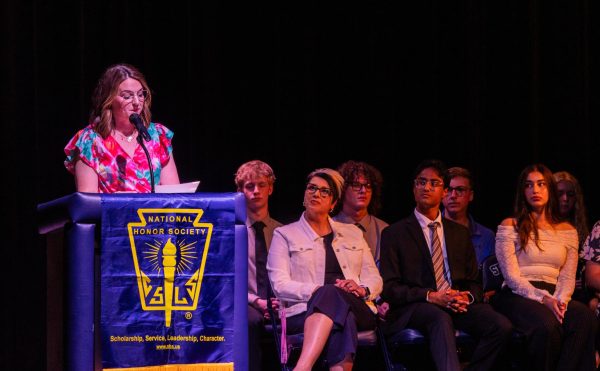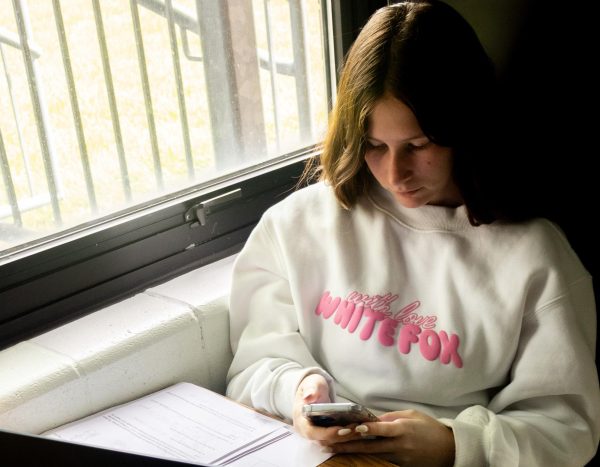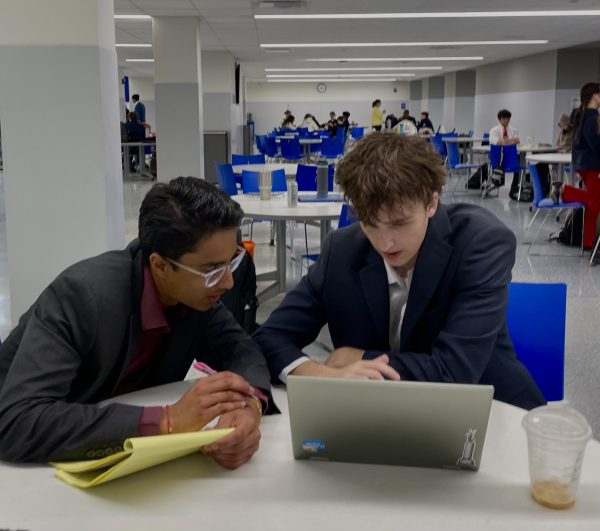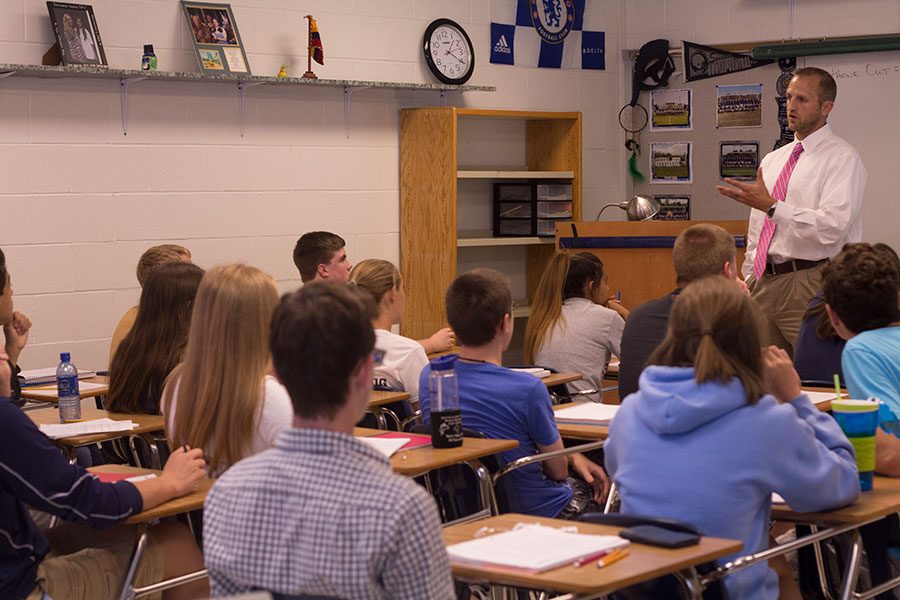Another levy
Proposition Howell, a newly proposed 60 cent tax levy, will be introduced to the community on the November ballot, in hopes of maintaining its current level of educational programming.
Mr. Nick Beckmann teaches a class full of 30+ students in AP Government. Many teachers have seen class sizes jump over 30 at the start of the 2016-17 school year.
In the years preceding 2014-2015, Francis Howell School District ended each year with a budget surplus, but the loss of $4 million generated annually by a Special Purpose Levy that expired that year, and negative impacts to the district property tax revenue — the district’s single largest source of revenue — caused by six years of stagnant property value assessments, has made this budget surplus no longer available.
Superintendent Mary Hendricks-Harris explains that the State of Missouri has not increased the amount of aid as promised, and the formula used to fund schools has not been fully supported. She further said that as the revenue streams were reduced, the cost of daily school operations increased.
“Salaries are the largest district expenditure and while there was a wage freeze for the 2016-2017 school year; prior to this salaries and contractual days increased,” Dr. Hendricks-Harris said. “The costs of technology, materials, and other instructional materials and equipment have [also] grown.”
Over the past five years the district has has made $20 million in budget cuts, reduced staff by the equivalent of 190 full-time positions since 2008, and has continued to make budget reductions. Dr. Hendricks-Harris explained the surplus of the cuts and the extremity/necessity of the levy.
“Last school year; the district cut $8.2 million from the budget and reduced the equivalent of 62 full-time positions. For this school year, the district has already cut $4 million which includes the equivalent of 36 full-time positions,” Dr. Henricks-Harris said. “Despite these expenditure reductions the need for a levy increase still exists … the district cannot maintain its current level of educational programming without an increase in revenue.”
The board approved Proposition Howell for the November ballot, hoping the public will support the ballot issue. The increase in the operating levy must be approved by a simple majority; the last time district voters approved a tax increase was in 2004. Chief Communications and Community relations officer, Matt Deichmann, explained how Proposition Howell would enable the district to maintain high student academic achievement.
“Proposition Howell would enable the district to maintain high student academic achievement. The increased funding would allow the district to maintain class sizes, improve safety, increase technology, and restore tutoring,” Deichmann said. “[It would also] attract and retain high quality teachers, maintain district facilities and maintain existing bus transportation. It would also allow the district to reinstate some of the staffing cuts made in the previous years.”
The Board of Education has had many conversations since the failure of the last tax levy in August 2015, and if the levy is not voted into action the district will have no other option than to make additional cuts, that could potentially negatively impact the students.
“The number of teachers and support staff will continue to be reduced which will again increase class sizes across the district. Technology for students will not be replaced and supports for struggling learners will not be restored,” Dr. Hendricks-Harris said. “Additional program reductions will be necessary, but the board and district administration will work to minimize the impact on classroom instruction as much as possible.”
Mrs. Ashton Sewing, busines teacher and has been affected by the failure of Prop Y first hand in every one of her classes. On average her classes have 30 or more students, her biggest class size is 32 students.
“Having that many students in a class is crippling since I teach computer classes, but I only have 30 computers in my room, however there are 32 kids that are in personal finance classes, so it was definitely a struggle at the beginning of the year trying to find technology,” Mrs. Sewing said. “And even though I have 30 computers, not every computer is going to work everyday so whenever a computer is out, that’s it, a student can work on their stuff. Especially with computer science, that is the only way they can do their school work because they’re sitting there coding and creating things, and if they don’t have a computer then they’re out.”
Mrs. Sewing has worries for future students in the years to come, if nothing is done about the money, and class sizes continue increasing.
“If class sizes do not go down I think it’ll definitely affect the student learning, if it continues on, especially in a technology class, the district is going to end up having to spend money to buy computers to help out in my classrooms,” Mrs. Sewing said. “As I teach elective classes, students aren’t going to be able to take those elective classes because they’re going to be full, so they won’t be able to take what they want, or explore and that is sort of why we have PLTW – for them to explore, and if the class is full and they get to be a senior there’s no way for them to take it.”
Your donation will support the student journalists of Francis Howell Central High School. Your contribution will allow us to purchase equipment and cover our annual website hosting costs. FHCToday.com and our subsequent publications are dedicated to the students by the students. We hope you consider donating to allow us to continue our mission of a connected and well-informed student body.







